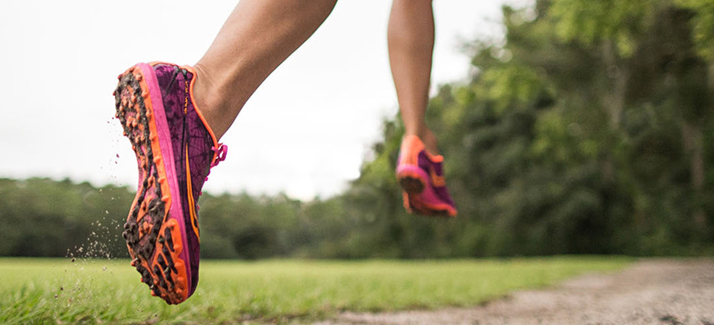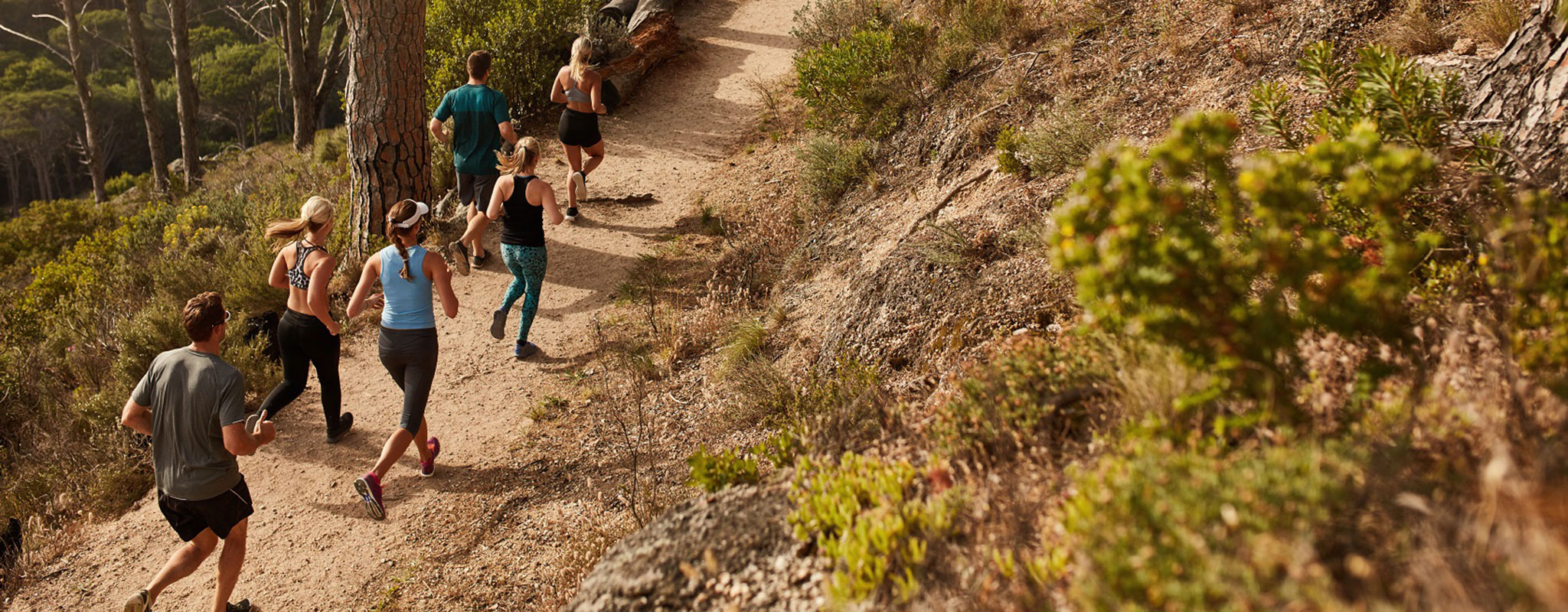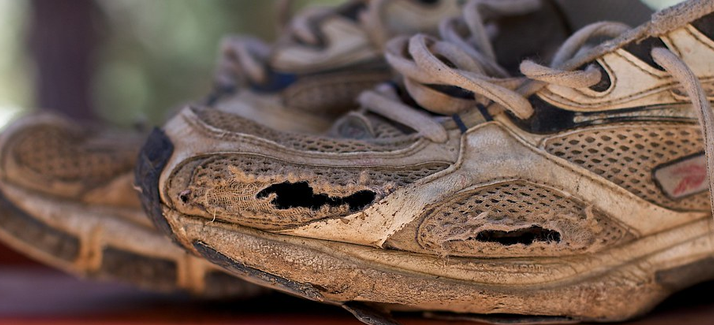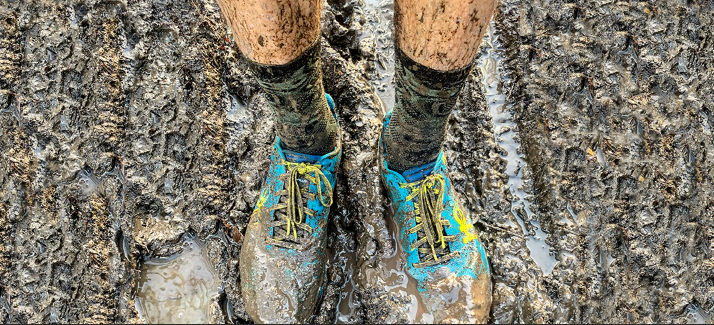Whether you're planning to hit the tracks to boost your endurance or considering taking up cross-country running in the hills and on the trails, have you considered a pair of running spikes? Running spikes are designed to give you the additional grip and stability you need to stay on track and propel yourself forward - helping improve your running times and give you the confidence to push yourself further.
With different styles for short sprints, middle-distance runs, and long cross-country marathons - finding the running spikes to suit your run is never easy. From choosing the right type to pin length and fit - we've compiled our running spikes buying guide to include everything you need to know to buy the right pair of spikes for you. So all you need to do is get out there, and get running...
What Are Running Spikes?
"Why should I use running spikes?" - Running spikes are specialised athletic shoes designed to provide maximum grip and speed on track or cross-country surfaces. Unlike regular running shoes, spikes feature lightweight construction and removable metal pins (the “spikes” themselves) in the sole, which dig into the ground for superior traction. This design helps runners accelerate quickly, maintain momentum, and stay stable on slippery or uneven terrain.
Types of Running Spikes: Which Is Right for You?
Sprint Spikes
Best for → 60m, 100m, 200m, 400m (including hurdles and relays)
Who should choose sprint spikes? If your races are all about speed and short bursts of power, sprint spikes are your best bet. They’re not suitable for longer distances due to their rigidity and lack of comfort features
Sprint spikes are engineered for maximum speed over short distances. They feature a very stiff spike plate, often with an aggressive upward curve at the toe, which encourages you to run on the balls of your feet. The lightest running shoes on the market, sprinting spike running shoes are designed to put runners on their toes and are usually quite stiff with little to no cushioning at the heels. The spike plate at the front will have the maximum number of pins to take more force and provide as much grip as possible - ideal for toe-off. Ideal for short distances at speed, Sprinting Spikes are best for 100-metre to 400-metre sprints on a track.
Key Characteristics:
- Stiff Plate → Limits flex, maximising energy return.
- High Pin Count → Usually 7–10 pins at the forefoot for explosive grip.
- Minimal Cushioning → Keeps you close to the track for fast acceleration.
- Snug Fit → Feels like a second skin to prevent foot movement.
Middle Distance Spikes
Best for → 800m, 1500m, mile, up to 3,000m (including steeplechase).
Who should choose middle-distance spikes? If you’re racing distances where both speed and endurance matter, these spikes provide the ideal compromise.
Middle-distance spikes strike a balance between speed and comfort. The spike plate is slightly more flexible than in sprint models, and there’s a touch more cushioning under the heel. This helps reduce fatigue and impact over longer races.
Key Characteristics:
- Moderate Flexibility → Allows for a more natural foot motion.
- Balanced Pin Placement → Typically 6–8 pins, spread between forefoot and midfoot.
- Lightweight Cushioning → Enough to protect your feet without adding bulk.
- Secure Fit → Still close-fitting, but with a bit more room than sprint spikes.
Long Distances Spikes
Best for → 3,000m, 5,000m, 10,000m (track)
Who should choose long-distance spikes? If you’re running longer track events or want a spike that’s easier on your feet, long-distance models are the way to go.
Long-distance spikes are designed for comfort and support over extended periods. The spike plate is flexible, with fewer pins (usually 4–6), and there’s more cushioning underfoot. The upper is still lightweight but may offer more structure for stability.
Key Characteristics:
- Flexible Plate → Promotes natural movement and reduces fatigue.
- Fewer Pins → Prioritises comfort and stability over outright grip.
- Extra Cushioning → Protects against impact during longer races.
- Breathable Upper → Keeps your feet cool and comfortable.
Cross-Country Spikes
Best for → Cross-country races on grass, mud, and uneven terrain
Who should choose cross-country spikes? If your races take you off the track and into the wild, these are essential for staying upright and moving fast
With slightly more cushioning than your typical track spike, Cross-Country Spikes are developed for running on grass in off-road trail events. They feature a robust upper for protection, a durable outsole, and the option to use longer pins (up to 15mm) for deep, soft ground. Some models have integrated rubber lugs for extra grip on hard or rocky surfaces.
Key Characteristics:
- Rugged Construction → Withstands mud, water, and rough ground.
- Longer Pins → Usually 9–15mm for maximum traction.
- Protective Upper → Shields your feet from debris and water.
- Versatile Grip → Some models have hybrid soles for mixed surfaces.
What Pin Length Do I Need for My Running Spikes?
Spike Studs, or 'Spike Pins', come in a range of shapes and sizes for various terrain types:
- 5mm - For use on Tartan Tracks during track and field events.
- 6mm - For use on Tartan and Grass Tracks during track and field events.
- 9mm - For use on Cross-Country Trails.
- 12mm - 15mm - For use on Cross-Country Trails in wet and muddy conditions.
How to Change Pins → Most spikes come with a small wrench for swapping pins. Always check your pins before a race and replace any that are worn or bent.
Can I Use Track Spikes for Cross-Country (and Vice Versa)?
While it’s technically possible to use track spikes for cross-country, it’s not ideal. Here’s why:
- Track Spikes → Designed for flat, hard surfaces. They often lack the protection and grip needed for mud, grass, and uneven ground.
- Cross-Country Spikes → Built for variable terrain, with more robust uppers and the option for longer pins. Some have rubber lugs for grip on hard surfaces.
Best Practice → Use each type for its intended purpose to maximise comfort, grip, and durability.
Do Running Spikes Have Carbon Plates?
Some of the latest high-performance spikes incorporate carbon fibre plates for added propulsion and stiffness. These are most common in elite-level sprint and middle-distance models.
- Benefits → Enhanced energy return, increased stiffness, and improved speed.
- Considerations → Carbon-plated spikes can feel very stiff and may not suit all runners, especially beginners.
Tip → Try both traditional and carbon-plated models if you have the chance, and choose what feels best for your running style.
How to Care for Your Running Spikes
Proper care will extend the life of your spikes and keep them race-ready:
- Clean After Use → Remove mud and debris after each session, especially after cross-country races.
- Dry Properly → Air dry your spikes (never use direct heat) to prevent damage.
- Replace Pins Regularly → Keep a set of spare pins and a wrench in your kit bag.
- Store Safely → Keep spikes in a breathable bag to avoid odours and mould.
Don't Forget...!
- Ensure you get the right fit of running spike for your feet and your run. If in doubt, come in-store and chat with one of our experts, or book a Gait Analysis appointment to find the right running shoes for you.
- Always carry spare spikes. When you're heading out for an event, make sure you check your pins frequently as they can wear down as quickly as 3 months, especially on concrete or other hard surfaces. Ensure you only wear your spikes on the track or at a cross-country event on a soft surface to avoid wearing them down early.
- Running spikes are a snug fit, so whether you wear socks or not is up to you. Going sock-free however can increase your chance of blisters so we recommend a thin technical sock to get the best of both worlds.
- Always break in a pair of running spikes before competing to reduce your risk of injury. Running spikes have a negative heel drop, putting extra stress on your forefoot increasing your risk of plantar fasciitis, Achilles tendonitis, and shin splints.
FAQs
They’re designed for racing and fast training on track or cross-country, offering superior grip and speed.
They should be snug, with your toes close to the end and no slipping at the heel.
Most UK tracks require 6mm pins or shorter.
It’s possible, but not recommended. Cross-country spikes may have longer pins or rubber lugs that aren’t suitable for track surfaces.
Absolutely! Just choose the right type for your event and ensure a comfortable fit.
Replace them when the upper is worn, the sole is damaged, or you lose support. Replace pins as soon as they show wear.
Related Articles









